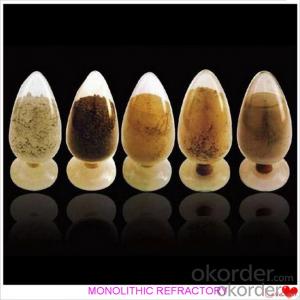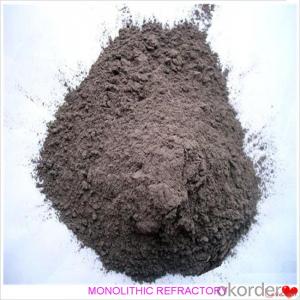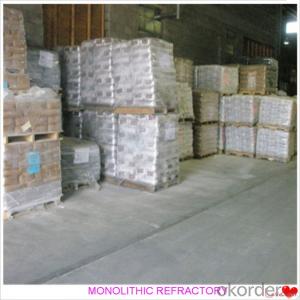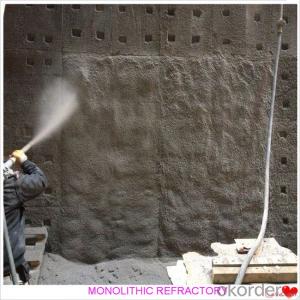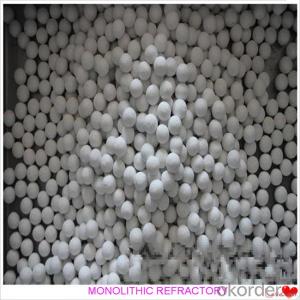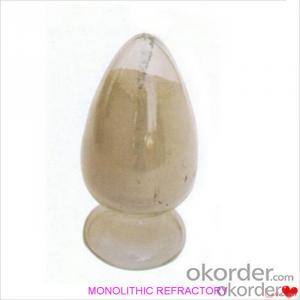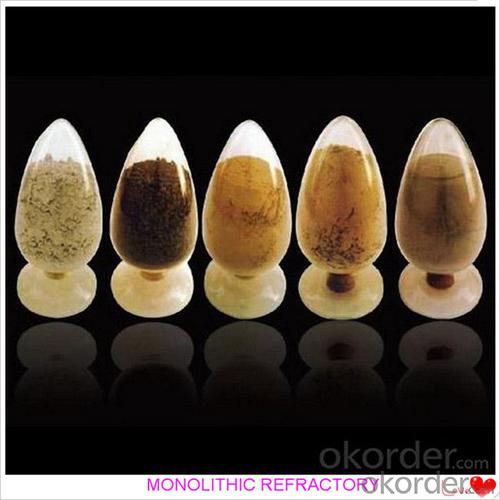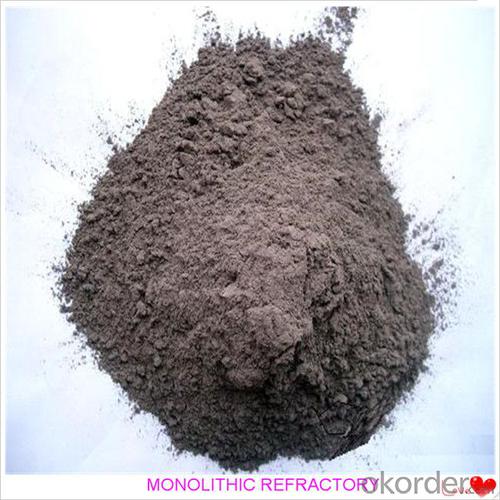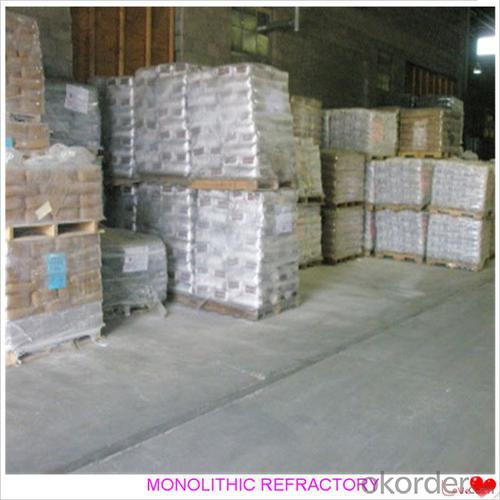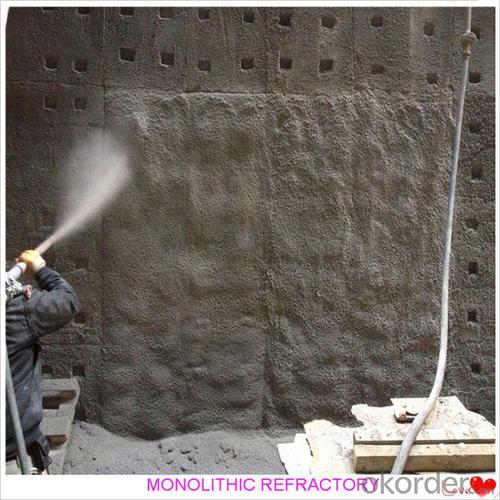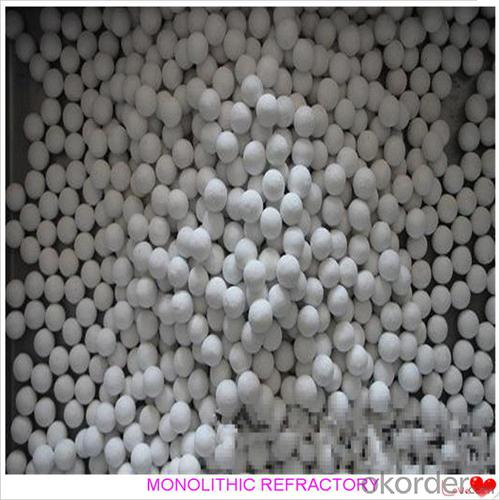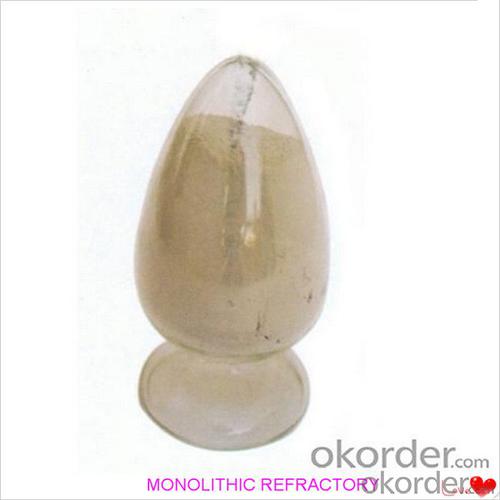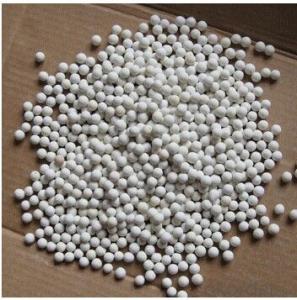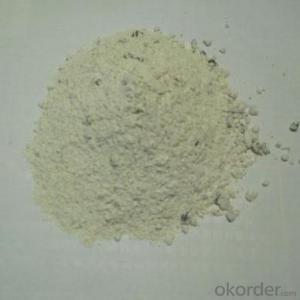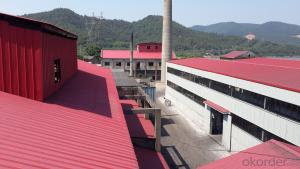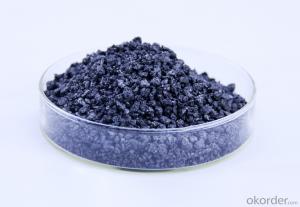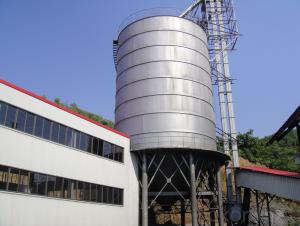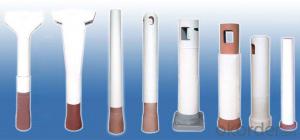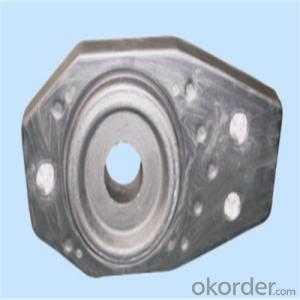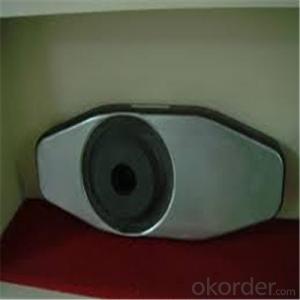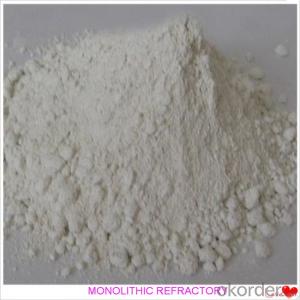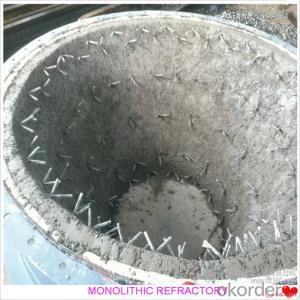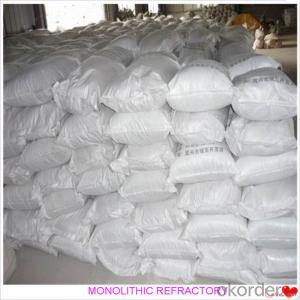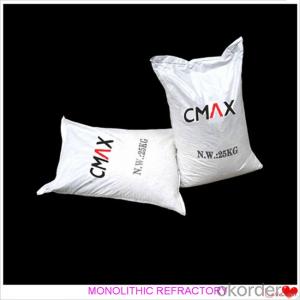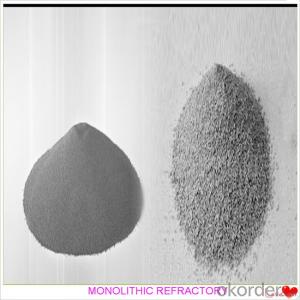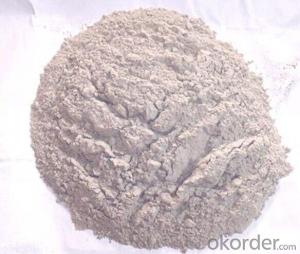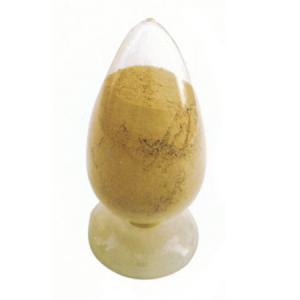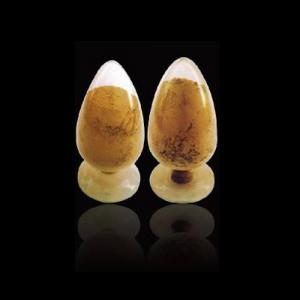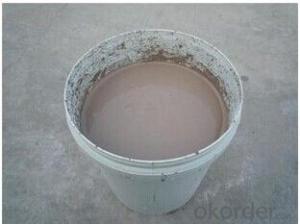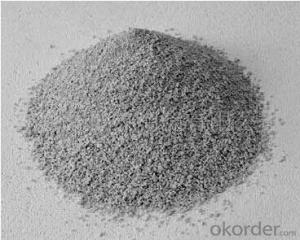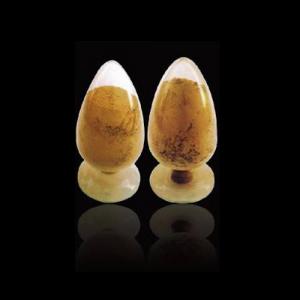Monolithic Refractories for Iron and Steel Industry - 42.5R Castable for Fireside and Industrial Furnace
- Loading Port:
- China main port
- Payment Terms:
- TT OR LC
- Min Order Qty:
- 1000 kg
- Supply Capability:
- 3000000 kg/month
OKorder Service Pledge
OKorder Financial Service
You Might Also Like
42.5R Castable For Fireplace and Industrial Furnace in Iron and Steel
Product Description:
42.5R castable is manufactured according to international standards. The product is famous for its excellent abrasion resistance and low thermal conductivity. Further, these can be provided in different specifications as required by the clients. The 42.5R castables are used high purity raw materials and additives as the main material, and made of under superfine powder adding technology.
Product Advantages:
The material has excellent structural stability and air tightness, and has high physical and chemical properties, also has a fine working ability.They should be used with the same material products.
Product Applications:
For feature of 42.5R castable, they have excellent abrasion resistance, thermal shock resistance, high-temperature resistance, anti-corrode and have high intensity.
Designed for refractory lining of blast furnace iron and slag runners, skimmers and soon
They can be used in troughs of small and mid size BFs and in all positions of the troughs where fast tapping is required.
Product Specifications:
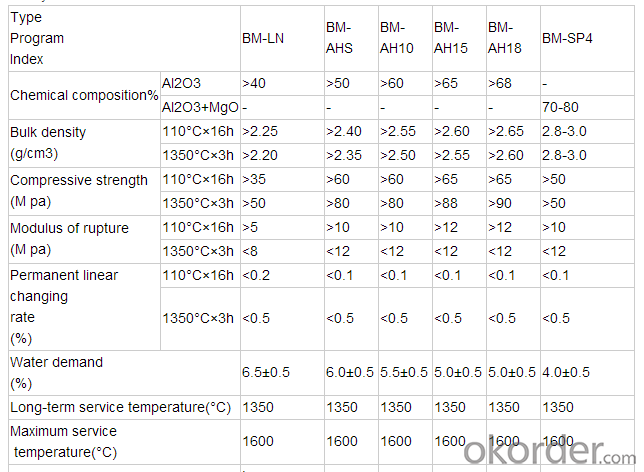
FAQ:
1. How you can control your quality?
For each production processing, we have complete QC system for the chemical composition
and Physical properties. After production, all the goods will be tested, and the quality certificate
will be shipped along with goods.
2. What's your delivery time?
It usually needs about 20days- 45 days after receiving the deposit.
3. Do you provide free samples?
Yes, we can provide a free sample for testing, If we have sample in stock,
The quantity based on the material type, The buyer should bear all the shipping costs.
4. What's your payment terms?
We can accept 30% deposit, 70% balance before shipment for ordrs over $ 2000.
5. Can we visit your Company?
Yes, certainly. You are very welcome to China and we will be honored to have a customer and friend.
Product Picture:
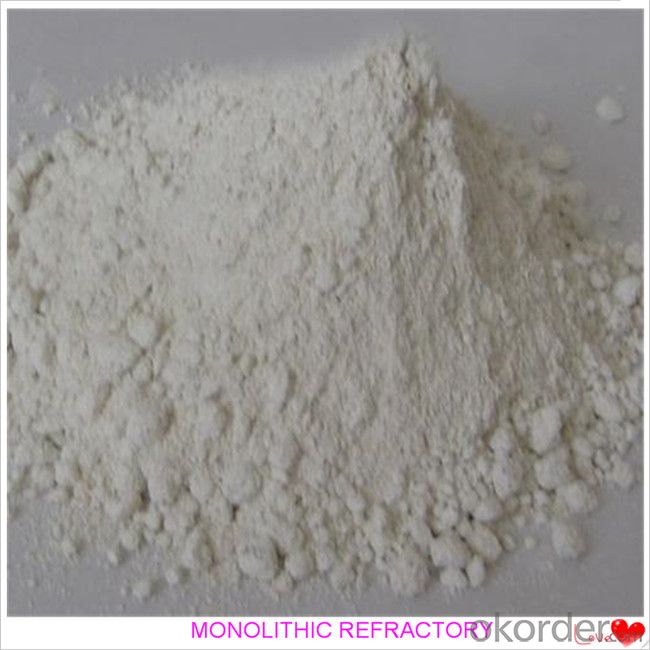
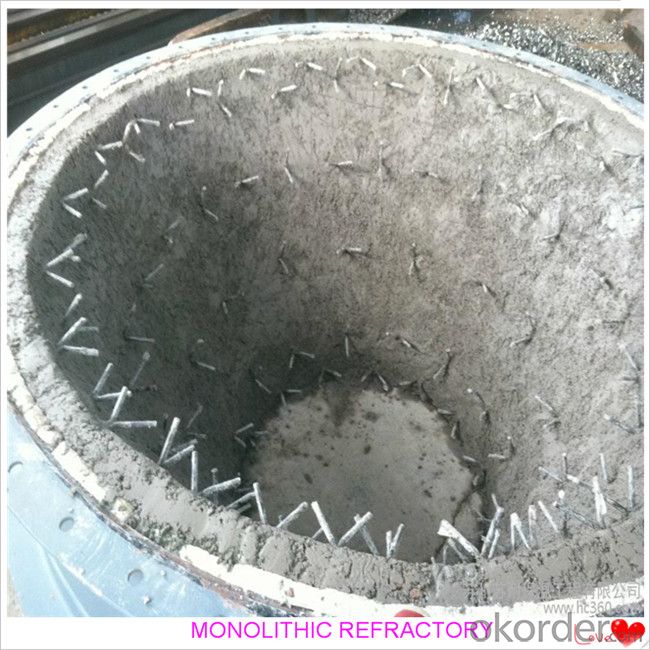
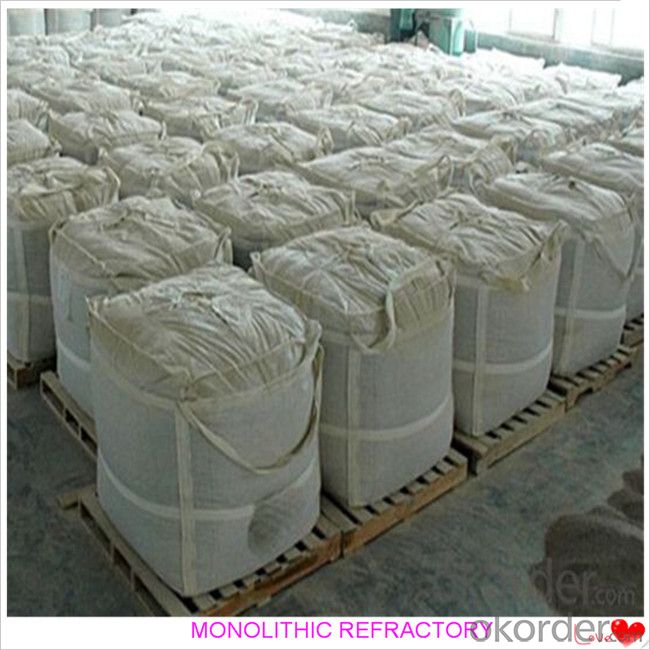
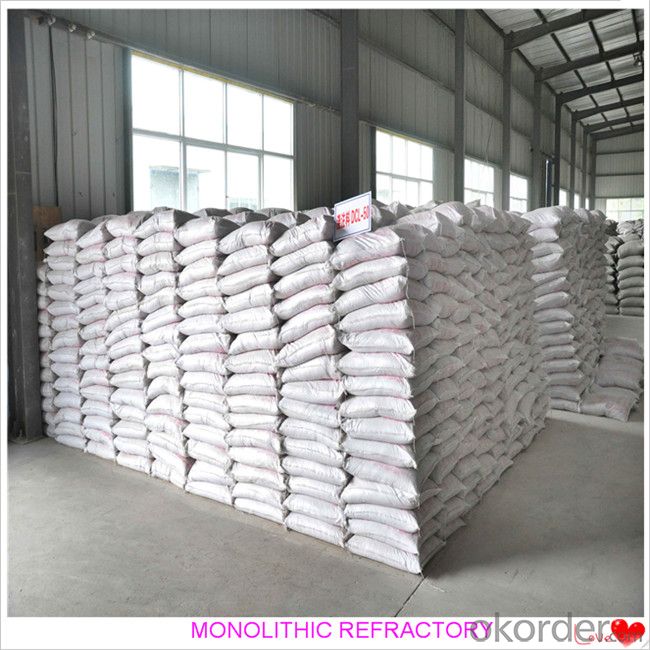
- Q: What are the key characteristics of monolithic refractories for electric arc furnace applications?
- Monolithic refractories designed for electric arc furnace applications possess several crucial qualities that render them suitable for the challenging conditions and extreme temperatures encountered in these environments. To begin with, monolithic refractories exhibit exceptional resistance to thermal shock. Electric arc furnaces operate at exceedingly high temperatures, and the rapid fluctuations in temperature during the melting and refining processes can subject the refractories to significant thermal stress. Monolithic refractories, however, are engineered to endure these thermal shocks without developing cracks or spalling, thereby guaranteeing the durability and performance of the lining. Moreover, monolithic refractories boast a high resistance to chemical attack. Electric arc furnaces involve the melting and refining of diverse metals and alloys, which can generate highly corrosive atmospheres. Monolithic refractories incorporate chemically inert materials and additives that bestow resistance against the corrosive impact of molten metals and slag, safeguarding the lining against chemical deterioration. Another noteworthy characteristic of monolithic refractories for electric arc furnace applications is their exceptional refractoriness. Refractoriness denotes a material's ability to retain its strength and integrity at elevated temperatures. Electric arc furnaces typically operate at temperatures surpassing 1500°C, and monolithic refractories are specifically engineered to endure these extreme conditions without experiencing substantial loss of properties or degradation. Furthermore, monolithic refractories offer efficient thermal conductivity. This property facilitates efficient heat transfer throughout the lining, ensuring uniform heating and melting of the charge material. It also helps minimize the occurrence of hot spots and thermal gradients, which can result in uneven wear and premature failure of the lining. Lastly, monolithic refractories are renowned for their ease of installation and repair. Unlike traditional brick or block refractories, monolithic materials can be cast, sprayed, or rammed into place, eliminating the need for intricate masonry work. This not only saves time and labor but also enables convenient maintenance and repair of the lining, reducing downtime and enhancing overall furnace efficiency. In conclusion, monolithic refractories for electric arc furnace applications possess exceptional thermal shock resistance, high chemical resistance, high refractoriness, efficient thermal conductivity, and ease of installation and repair. These qualities render monolithic refractories ideal for withstanding the harsh conditions and demanding requirements of electric arc furnace operations.
- Q: How do monolithic refractories contribute to the safety of iron and steel operations?
- Monolithic refractories play a crucial role in enhancing the safety of iron and steel operations. These refractories are made of a single, continuous material, which offers several benefits that contribute to the overall safety of the operations. Firstly, monolithic refractories provide excellent thermal insulation. They are designed to withstand high temperatures, preventing heat transfer to the surrounding environment. This insulation property helps in maintaining a safe working temperature for the operators, reducing the risk of burns or other heat-related injuries. Furthermore, monolithic refractories have high resistance to chemical attack. In iron and steel operations, various chemicals and molten metals are used, which can be corrosive and hazardous. The use of monolithic refractories as lining materials creates a protective barrier that resists the corrosive effects of these substances, preventing leaks and potential accidents. Another safety benefit is the ability of monolithic refractories to withstand mechanical stress. Steelmaking processes involve heavy machinery and equipment, which can exert significant pressure on the refractory linings. Monolithic refractories have excellent mechanical strength, which enables them to withstand these stresses and maintain their integrity. This prevents the risk of sudden failure or collapse, reducing the possibility of accidents and injuries due to falling debris. Additionally, monolithic refractories offer easy installation and repair. They can be applied as a castable or gunning material, allowing for quick and efficient lining of furnaces, ladles, and other equipment. This ease of installation reduces downtime during maintenance or repairs, minimizing the risk of accidents caused by delayed or prolonged shutdowns. In summary, monolithic refractories contribute to the safety of iron and steel operations through their excellent thermal insulation, resistance to chemical attack, ability to withstand mechanical stress, and ease of installation and repair. By providing a protective barrier, these refractories help in preventing injuries, maintaining a safe working environment, and minimizing the potential hazards associated with high temperatures, corrosive substances, and mechanical failures.
- Q: How do monolithic refractories enhance the performance of ladle and tundish covers?
- The performance of ladle and tundish covers is significantly improved by the utilization of monolithic refractories. There are several ways in which this enhancement is achieved. Primarily, monolithic refractories possess remarkable thermal insulation properties. The steelmaking process subjects ladles and tundishes to extreme temperatures. Through the use of monolithic refractories, the covers effectively trap and retain heat, preventing excessive heat loss. This insulation ability not only helps maintain the desired temperature of the molten steel but also reduces the energy consumption required for heating. Secondly, monolithic refractories demonstrate exceptional resistance to thermal shock. When ladles and tundishes are filled with molten steel, there is a rapid and drastic temperature change in the refractory lining. This sudden shift can cause cracking and spalling of the lining, jeopardizing its integrity. However, monolithic refractories possess high thermal shock resistance, enabling them to endure these abrupt temperature fluctuations without significant damage. This ensures the longevity and durability of the ladle and tundish covers. Additionally, monolithic refractories exhibit excellent corrosion resistance. The presence of molten steel and other corrosive substances in ladles and tundishes can erode the refractory lining over time. Nonetheless, monolithic refractories are specifically engineered to withstand these corrosive environments, shielding the covers from chemical attack and erosion. This corrosion resistance enhances the lifespan of the ladle and tundish covers, reducing the need for frequent replacements and associated downtime. Furthermore, monolithic refractories provide good mechanical strength and stability. Ladles and tundishes undergo various mechanical stresses, including the weight of the molten steel, thermal expansions, and vibrations. The use of monolithic refractories furnishes the necessary strength and stability to endure these mechanical forces, averting structural failures and maintaining the integrity of the covers. To summarize, monolithic refractories heighten the performance of ladle and tundish covers by providing exceptional thermal insulation, resistance to thermal shock and corrosion, and sufficient mechanical strength. These properties guarantee efficient steelmaking processes, diminish maintenance costs, and extend the lifespan of ladles and tundishes.
- Q: How do monolithic refractories improve the thermal efficiency of iron and steel furnaces?
- The thermal efficiency of iron and steel furnaces greatly benefits from the use of monolithic refractories. These refractories, which are solid and unified, are essential for lining the furnaces and protecting them from the extreme temperatures involved in the metal production process. One way in which monolithic refractories enhance thermal efficiency is by minimizing heat loss. Due to their low thermal conductivity, these materials do not conduct heat well. By lining the furnace with monolithic refractories, the heat produced inside the chamber is effectively contained, resulting in less heat being lost to the surroundings. This allows for a more efficient use of energy, as less heat goes to waste and more is utilized for the purpose of heating and melting the metal. Moreover, monolithic refractories also contribute to the overall efficiency of iron and steel furnaces by offering a high level of heat resistance. The extreme temperatures experienced inside these furnaces can easily damage traditional refractory materials. However, monolithic refractories are specifically designed to withstand these harsh conditions, maintaining their integrity and performance over long periods of time. This durability ensures that the lining remains intact, preventing any potential leakage of heat and allowing the furnace to operate at its maximum efficiency. Furthermore, the installation process of monolithic refractories is flexible. They can be easily shaped and molded to fit the intricate designs and contours of the furnace, resulting in a seamless and continuous lining. This eliminates any gaps or weak points that could allow heat to escape or cold air to enter, further enhancing the thermal efficiency of the furnace. In conclusion, monolithic refractories significantly improve the thermal efficiency of iron and steel furnaces by reducing heat loss, providing high heat resistance, and ensuring a tight and continuous lining. By optimizing heat utilization and minimizing energy wastage, these refractories play a crucial role in enhancing the productivity and sustainability of the iron and steel industry.
- Q: How do monolithic refractories enhance the performance of ladle and tundish purging systems?
- Monolithic refractories play a crucial role in enhancing the performance of ladle and tundish purging systems in several ways. Firstly, monolithic refractories offer excellent thermal insulation properties. Ladle and tundish purging systems require high temperatures to effectively remove impurities and gases from molten metal. The use of monolithic refractories helps to minimize heat loss and maintain the desired temperature within the system. This ensures that the purging process is carried out efficiently and effectively. Secondly, monolithic refractories provide superior erosion and corrosion resistance. During the purging process, the molten metal and purging gases can be highly corrosive and abrasive. Monolithic refractories are designed to withstand such harsh conditions, preventing erosion and corrosion of the lining. This prolongs the lifespan of the ladle and tundish purging systems, reducing the need for frequent repairs or replacements. Furthermore, monolithic refractories offer excellent strength and stability. Ladle and tundish purging systems experience significant mechanical stresses due to the movement of molten metal and purging gases. The use of monolithic refractories ensures the structural integrity of the lining, preventing any deformation or failure under these conditions. This allows for smooth and uninterrupted purging operations, improving the overall performance of the system. In addition, monolithic refractories provide ease of installation and maintenance. Unlike traditional brick and mortar refractories, monolithic refractories can be easily applied as a single, homogeneous layer. This simplifies the installation process and reduces the time and effort required for maintenance. Any necessary repairs or replacements can be carried out more efficiently, minimizing downtime and maximizing the productivity of the ladle and tundish purging systems. Overall, monolithic refractories enhance the performance of ladle and tundish purging systems by providing excellent thermal insulation, erosion and corrosion resistance, strength and stability, as well as ease of installation and maintenance. These properties contribute to the efficient and effective removal of impurities and gases from molten metal, ensuring high-quality output and optimizing the overall productivity of the purging process.
- Q: What are the typical compositions of monolithic refractories?
- Monolithic refractories are typically composed of a combination of aggregates, binders, and additives. Aggregates are materials such as alumina, magnesia, or silicon carbide that provide the main refractory properties. The choice of aggregate depends on the desired characteristics of the refractory, such as resistance to high temperatures, thermal shock, or chemical attack. Binders are used to bind the aggregates together and give the refractory its shape and strength. Common binders include clay, calcium aluminate cement, or colloidal silica. The binder also contributes to the overall performance of the refractory, influencing properties such as thermal conductivity and chemical resistance. Additives are often incorporated into the composition to improve specific properties or enhance the processing of the monolithic refractory. These additives can include plasticizers, which improve workability and allow for easier installation, or antioxidants, which can increase the refractory's resistance to oxidation. Overall, the specific composition of a monolithic refractory can vary depending on the intended application and the desired performance characteristics. Different combinations of aggregates, binders, and additives can be tailored to suit specific temperature ranges, chemical environments, or mechanical stresses.
- Q: What are the recommended installation techniques for monolithic refractories?
- The recommended installation techniques for monolithic refractories typically involve proper surface preparation, mixing of refractory materials, and precise application. It is crucial to clean and remove any loose debris from the substrate before installation. The refractory materials should be mixed thoroughly with the appropriate water content to achieve the desired consistency. It is recommended to use vibration or tamping techniques during application to remove air pockets and ensure proper compaction. Careful curing and drying processes should be followed to prevent thermal shock and achieve optimal performance.
- Q: How are monolithic refractories different from traditional refractory materials?
- Monolithic refractories differ from traditional refractory materials in that they are formed and applied in a single, continuous mass or form, while traditional refractory materials are typically shaped and fired before installation. This allows monolithic refractories to be more versatile, easier to install, and provide better thermal insulation and resistance to high temperatures. Additionally, monolithic refractories have better resistance to thermal shock and chemical attack, making them more suitable for various industrial applications.
- Q: How are monolithic refractories manufactured?
- Manufacturing monolithic refractories is a specific process that consists of multiple steps. The initial step involves selecting and preparing raw materials, typically comprising aggregates, binders, and additives. Aggregates are chosen based on their chemical and physical properties, while binders are utilized to hold the aggregates together. Additives are incorporated to enhance specific properties of the refractory material. Once the raw materials are chosen, they are thoroughly mixed in precise proportions to create a uniform mixture. This mixture is then blended using different techniques such as dry or wet mixing, depending on the desired characteristics of the final product. Following the blending process, the subsequent step involves shaping the refractory material. This can be accomplished through various methods such as casting, gunning, ramming, or spraying. The selection of the method is based on the specific application and requirements of the refractory. After shaping, the refractory material undergoes a curing process. This entails drying the material at a controlled temperature to eliminate any excess moisture and promote the development of desired properties. Lastly, the cured refractory material is subjected to high temperatures in a kiln. This firing process further strengthens the refractory and enhances its ability to withstand heat and other harsh conditions. In summary, the manufacturing of monolithic refractories entails meticulous selection and preparation of raw materials, precise blending, shaping, curing, and firing procedures. This guarantees the production of superior-quality refractory materials capable of withstanding the extreme conditions encountered in various industrial applications.
- Q: What are the key factors to consider when designing the lining system with monolithic refractories?
- When designing a lining system with monolithic refractories, there are several key factors that need to be considered in order to ensure optimal performance and longevity of the lining. These factors include: 1. Material selection: Choosing the right monolithic refractory material is crucial. Factors such as the operating temperature, chemical environment, and mechanical stress need to be taken into account. Different monolithic refractories have varying properties and performance characteristics, so selecting the most suitable material for the specific application is essential. 2. Thermal expansion: Monolithic refractories, like any other material, expand and contract with changes in temperature. It is important to consider the thermal expansion properties of the refractory material and how it will interact with the surrounding structure. Proper expansion joints or design features should be incorporated to accommodate thermal expansion and prevent cracking or spalling. 3. Installation technique: The method of installation plays a critical role in the performance of the lining system. It is important to follow the manufacturer's guidelines for mixing, placing, and curing the monolithic refractory material. Improper installation can lead to reduced lining integrity, decreased thermal conductivity, and compromised structural stability. 4. Bonding and anchoring: Ensuring a strong bond between the monolithic refractory and the substrate is essential for effective lining performance. Proper surface preparation, selection of suitable bonding agents, and appropriate anchoring techniques should be considered to enhance the adhesion and stability of the lining system. 5. Structural design: The structural design of the lining system should be carefully planned to withstand the mechanical stresses and operational conditions. Factors such as load-bearing capacity, thermal shock resistance, and thermal cycling should be taken into consideration during the design phase. Reinforcement materials, such as steel fibers or mesh, may be required to enhance the structural integrity and prevent cracking or spalling. 6. Maintenance and repair: Anticipating the need for maintenance and repair is crucial for the longevity of the lining system. Consideration should be given to access points, inspection ports, and repair techniques. Regular inspections and proactive maintenance can help identify and address any issues before they escalate and lead to major failures. By considering these key factors when designing the lining system with monolithic refractories, one can ensure a well-designed and effective lining that can withstand the harsh conditions and provide long-term performance.
Send your message to us
Monolithic Refractories for Iron and Steel Industry - 42.5R Castable for Fireside and Industrial Furnace
- Loading Port:
- China main port
- Payment Terms:
- TT OR LC
- Min Order Qty:
- 1000 kg
- Supply Capability:
- 3000000 kg/month
OKorder Service Pledge
OKorder Financial Service
Similar products
Hot products
Hot Searches
Related keywords
